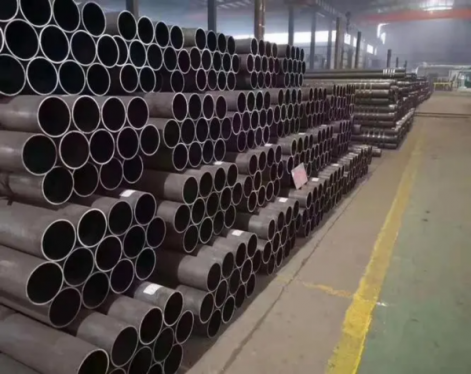In the machinery manufacturing industry, there are many methods for forming thick-walled seamless tubes, but few processes truly benefit enterprises in terms of efficiency, cost, and quality. Cold extrusion technology is a typical example. Many manufacturers, after implementing this process, have clearly felt that dimensions are more stable, materials are saved, and equipment is easier to automate. Below, based on industry experience, we will break down the core advantages of cold extrusion technology.
The manufacturing process of thick-walled seamless steel pipes can be divided into four basic methods: cold drawing, cold rolling, hot rolling, and hot expansion. The steel pipes are made of materials such as 10#, 20#, 35#, and 45#, which are called ordinary steel pipes. According to their uses, they are classified as seamless steel pipes for structural applications; seamless steel pipes for transportation; seamless steel pipes for boilers; and seamless steel pipes for high-pressure boilers.
I. Good Dimensional Stability and High Surface Precision
The biggest characteristic of the cold extrusion process is the small dimensional error and high surface finish of the formed parts. Generally, parts produced by commonly used cold extrusion equipment in China can maintain a stable dimensional accuracy within the range of 8-9. With good lubrication conditions and proper die maintenance, the surface finish of the extruded parts can even approach the level of fine polishing.This means that many parts can directly enter the next process after exiting the extruder, without the need for extensive rework like traditionally machined parts. Most products only require localized fine grinding or cleaning before production, significantly shortening the processing cycle.
II. Significantly Improved Raw Material Utilization
The material-saving capabilities of cold extrusion have long been recognized in the industry. Because the metal fiber streamlines are preserved, deformation is concentrated and controllable, the material utilization rate of parts of the same specification is much higher than that of machining.For example, in the automotive industry:
Jiefang brand automobile pistons: The material utilization rate of traditional machining is only about 43%, while after introducing cold extrusion, it can be increased to about 92%, almost doubling.
Universal joint bearing sleeves: The utilization rate of machining is only 27.8%, which increases to about 64% after using cold extrusion.
These types of parts are produced in large quantities, and the cost advantage brought by reduced material usage is considerable. For companies using alloy steel, copper alloys, and other materials, it can effectively reduce production costs.

III. Significantly Improved Production Efficiency, Suitable for Mass Manufacturing
Cold extrusion technology is also very suitable for assembly line and continuous production. Due to the concentrated process, many parts can complete most of their shape after one extrusion forming, so the cycle time achievable by the equipment is much higher than that of traditional turning methods.A common comparison in the industry is as follows:
For the same specification automotive piston pin, cold extrusion is 3.2 times more efficient than machining.
Some companies are already using cold extrusion robotic lines, with one line capable of producing the output of dozens of ordinary machine tools.
A fully automated cold extrusion machine typically achieves the production efficiency of approximately 100 ordinary lathes or 10 four-axis automatic lathes.
For large-volume orders, the advantages of cold extrusion lines are even more pronounced, saving labor and making it easier to ensure consistent batch quality.
IV. Other Potential Advantages (Often Overlooked)
Besides the three common advantages, cold extrusion offers some "hidden benefits" in actual production:Complete metal flow lines: Improves the fatigue strength of parts, especially for thick-walled parts.
Fewer burrs and controllable deformation: Reduces secondary processing costs.
More suitable for automation and CNC machining: Controllable die life facilitates the formation of standardized production lines.
For parts that require high toughness or can withstand alternating loads, such as automotive chassis parts and engineering machinery parts, cold extrusion forming provides more stable mechanical properties.









